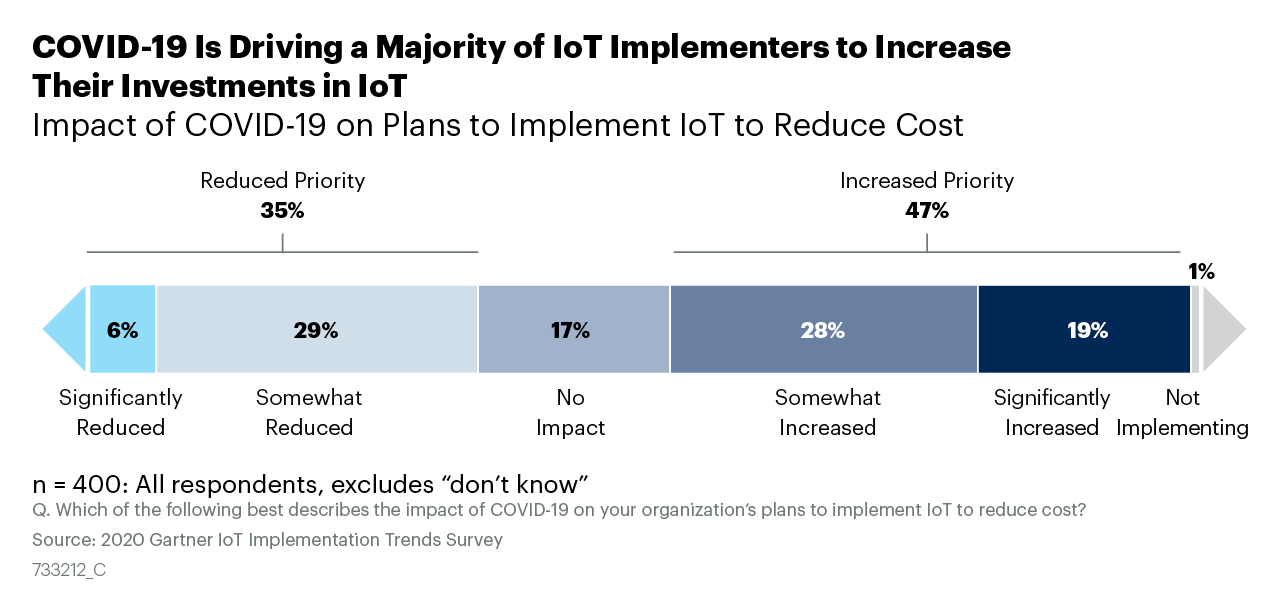Blogs
08 November 2020
Reading Time: 2 mins
Blogs
08 November 2020
Reading Time: 2 mins
2020 was the year that 50 billion devices were forecast to be connected. In reality, as we close the end of this year, this figure falls far below its original lofty prediction. In 2019, 9.9 billion consumer and B2B IoT devices were active and recorded by the market research firm IoT Analytics.
Unlocking the potential of IoT continues to be a challenge for organisations. In fact, according to a Senior Analyst at Gartner, 80% of IoT projects fail before they even launch. It’s a real pity to see innovative IoT projects struggle to get past the start line and use cases that could disrupt businesses lie wasted.
So, what exactly is holding IoT back, and why?
Recently we spoke with senior experts from across the IoT industry at Microsoft Azure, EY, Thales, Relayr, Chasm Group and Eseye in our IoT Special Report. Together they shared their insights and identified four barriers to IoT success.
Often traditional companies do not have a culture of innovation, which enables them to quickly deploy connectivity into their products, and redesign them to take maximum advantage of this opportunity. As a result, IoT projects languish or progress slowly.
Companies built around physical products are often set up in ways not suited to the connected world. IoT brings together R&D, device manufacture, IT, and data teams. It blurs the line between CAPEX and OPEX, and often changes the role of sales to one of ongoing customer support. These boundaries often need to be broken down before true disruption can be realised.
IoT needs new cloud and connectivity technologies which may previously have not been core elements of the offer. There is a need to explore and embrace new technologies and bring a lot of new complexity together.
Connectivity has proven a challenge for customers who rely on their device transmitting and receiving data anywhere in the world. There are around 800 MNOs globally all with different coverage, roaming arrangements and using different telecoms technologies. Because there is a lack of interoperability between network operators, no network has more than 90% global coverage. Few companies can afford to deploy a product which doesn’t work in 10% of situations.
2020 has proven to be a highly disruptive year on a global scale. But where there is disruption; there is an opportunity. As our CEO, Nick Earle often says, “Disruption doesn’t happen on the straights. It happens on the corners. And right now, we’re in the mother of all corners.”
A recent Gartner survey, published in October 2020, reveals that 47% of organizations will increase investments in IoT despite the impact of COVID-19.
The pandemic has, in fact, spurred companies on.
Gartner says, “Most companies have plenty of “low hanging fruit” cost-saving opportunities to pursue, such as predictive-maintenance on commercial and industrial assets like elevators or turbines, and optimization of processes such as increasing manufacturing yield.”

Now, perhaps more than ever, is the time to take stock and identify the areas to innovate. Time to overtake on the bends. The question is, are you ready?
Predictable performance is the key to IoT success. Let our experts test your device for free. Receive a free trial IoT SIM trial kit and speed up your IoT deployment with expert insights and seamless connectivity.